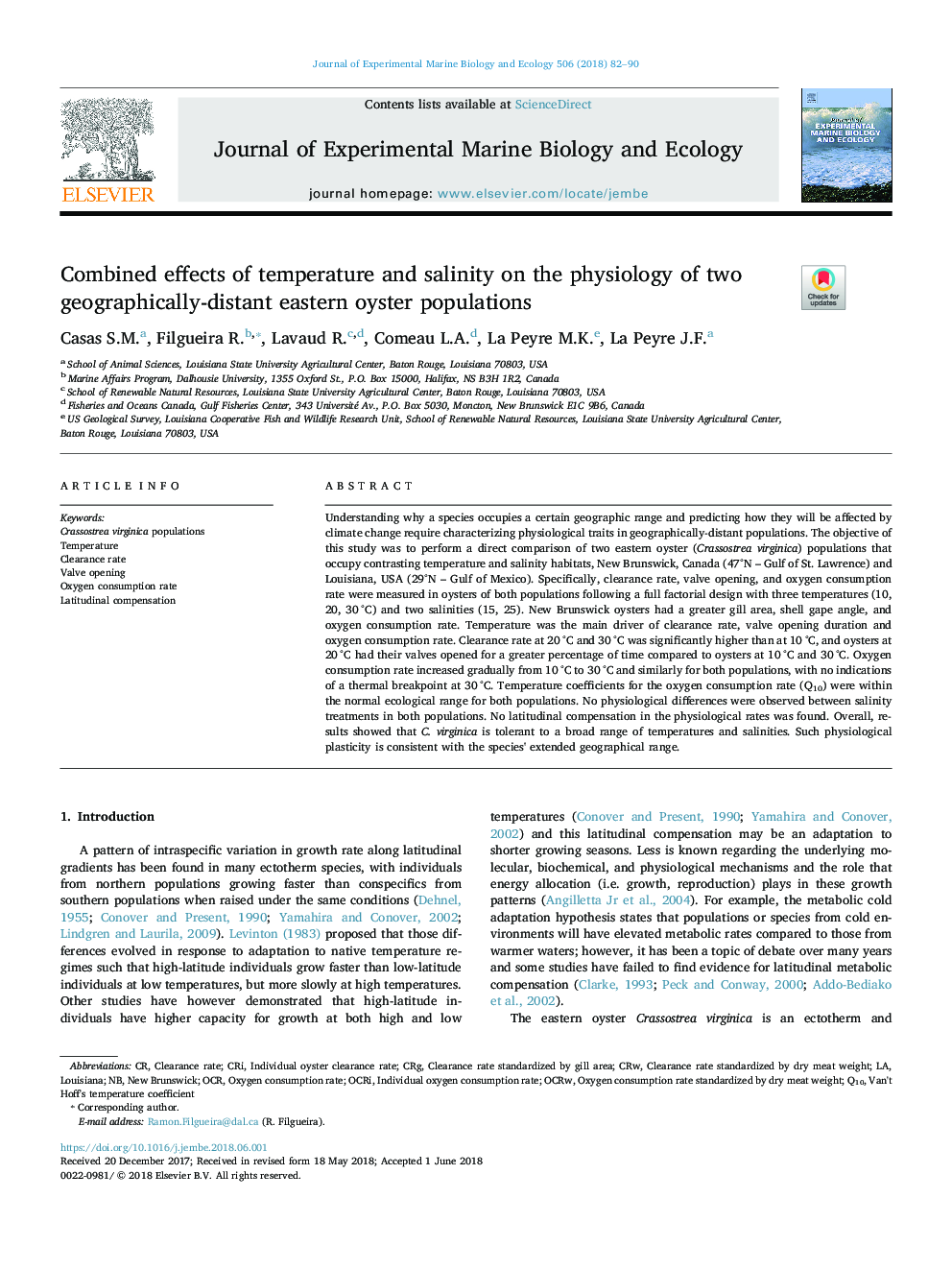| کد مقاله | کد نشریه | سال انتشار | مقاله انگلیسی | نسخه تمام متن |
|---|---|---|---|---|
| 8848887 | 1618369 | 2018 | 9 صفحه PDF | دانلود رایگان |
عنوان انگلیسی مقاله ISI
Combined effects of temperature and salinity on the physiology of two geographically-distant eastern oyster populations
ترجمه فارسی عنوان
اثرات ترکیبی دما و شوری بر فیزیولوژی دو جمعیت گورستان شرقی دور از جغرافیایی
دانلود مقاله + سفارش ترجمه
دانلود مقاله ISI انگلیسی
رایگان برای ایرانیان
کلمات کلیدی
موضوعات مرتبط
علوم زیستی و بیوفناوری
علوم کشاورزی و بیولوژیک
علوم آبزیان
چکیده انگلیسی
Understanding why a species occupies a certain geographic range and predicting how they will be affected by climate change require characterizing physiological traits in geographically-distant populations. The objective of this study was to perform a direct comparison of two eastern oyster (Crassostrea virginica) populations that occupy contrasting temperature and salinity habitats, New Brunswick, Canada (47°N - Gulf of St. Lawrence) and Louisiana, USA (29°N - Gulf of Mexico). Specifically, clearance rate, valve opening, and oxygen consumption rate were measured in oysters of both populations following a full factorial design with three temperatures (10, 20, 30â¯Â°C) and two salinities (15, 25). New Brunswick oysters had a greater gill area, shell gape angle, and oxygen consumption rate. Temperature was the main driver of clearance rate, valve opening duration and oxygen consumption rate. Clearance rate at 20â¯Â°C and 30â¯Â°C was significantly higher than at 10â¯Â°C, and oysters at 20â¯Â°C had their valves opened for a greater percentage of time compared to oysters at 10â¯Â°C and 30â¯Â°C. Oxygen consumption rate increased gradually from 10â¯Â°C to 30â¯Â°C and similarly for both populations, with no indications of a thermal breakpoint at 30â¯Â°C. Temperature coefficients for the oxygen consumption rate (Q10) were within the normal ecological range for both populations. No physiological differences were observed between salinity treatments in both populations. No latitudinal compensation in the physiological rates was found. Overall, results showed that C. virginica is tolerant to a broad range of temperatures and salinities. Such physiological plasticity is consistent with the species' extended geographical range.
ناشر
Database: Elsevier - ScienceDirect (ساینس دایرکت)
Journal: Journal of Experimental Marine Biology and Ecology - Volume 506, September 2018, Pages 82-90
Journal: Journal of Experimental Marine Biology and Ecology - Volume 506, September 2018, Pages 82-90
نویسندگان
Casas S.M., Filgueira R., Lavaud R., Comeau L.A., La Peyre M.K., La Peyre J.F.,
